Pest Control Methods – Chapter 4 – Bird Control Methods
Panther Pest Control Blog
Keep your home pest-free with Panther Pest Control:
- Expert pest control services for homes and businesses.
- Safe, effective, and environmentally-friendly treatments.
- Trusted professionals dedicated to eliminating pests for good.
Find pest controller near you
This chapter is about bird control methods. Should you or shouldn’t you use chemical pest control means to get rid of the vermin? It can be tricky because some types of birds are beneficial to your garden, and you have to make sure that you use the right methods to only keep the annoying birds away.
Bird Control Methods
In the United Kingdom some bird species are considered as pests. If you ask anyone who’ve had birds landing, roosting and nesting in their business property, he will be glad to hear that there are plenty of methods to eliminate or deter these nuisance pests.
In large numbers birds can be responsible for variety of problems to your business such as pigeon diseases spread through their feces, including histoplasmosis, cryptococcosis, and psittacosis. It’s really important to take measures on time, otherwise some damage to property and equipment may also occur.
Another problem that farmers may face is birds attacking their crops and fruit orchards. Several bird control methods may solve this problem. The most effective ones are generally a combination of a few pest control techniques.
Which bird species are seen as pests in the UK
- Black-backed gull;
- Lesser black-backed gull;
- Herring gull;
- Feral pigeon;
- Starling;
- Collared dove.
Bird Control Devices
Bird scarers
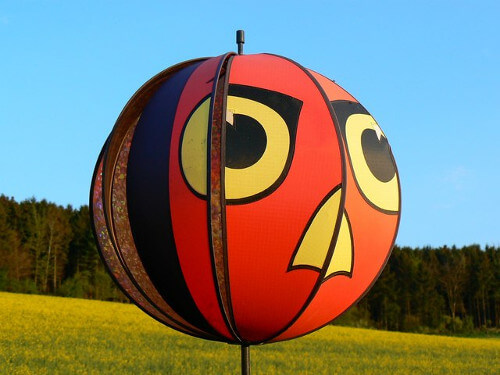
A bird scarer is any of a number devices designed to scare birds. Mostly employed by farmers on their crops to scare birds away from recently planted arable crops and dissuade them from eating the crops.
Another place where the scarers are frequently used on are the airfields, in order to prevent birds from accumulating near runways and causing a potential hazard to aircraft. There are two types of bird scarers which can be used – visual scarers and auditory scarers.
Scarecrow
Scarecrows are usually built from straw and wood and are one of the oldest designs knows for bird scarers. In medieval Britain, scarecrows were young boys who were tasked with the duty of scaring birds away. Their responsibility was to patrol wheat fields and keep any crow or starling that tried to land in the fields by running against them while screaming and throwing stones at the same time.
Scarecrows are mainly designed in the shape of a human figure, however not all visual scare devices are shaped like humans. This method doesn’t work so well with all species, considering that some species frequently perch on scarecrows.
Hawk kite
In natural some bird species are afraid of predators such as birds of prey. This is why the “Hawk kites” were designed. They fly from poles in the wind and protect the field by hovering above it. To design the perfect “Hawk kite” its shape should match exactly the silhouette of a bird of prey.
Helikites
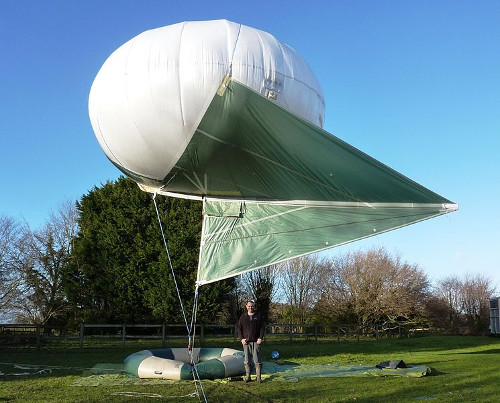
A Helikite is a lighter-than-air combination of a kite and a disposable helium-filled balloon. It is frequently as an extremely effective solution for scaring birds. At the beginning, it was used only when windy, however, farmers and scientists needed something that would also fly in no wind.
Today there are two different types of bird scaring Helikites available. The Vigilante Helikite for temperate climates and the Lightweight Helikite for hot climates and tree fruit. They can fly up to 200 ft. in the air no matter if there is wind or not. Helikites can cover large areas of farmland and hover in the sky behaving like birds of prey.
Lasers
There is some evidence about some birds being laser-resistant, however, the use of lasers is still an effective method in order to keep pest birds away from the crops. Although some lasers prove to be effective during daylight hours, the most effective time to use them is at dawn and dusk because when the light levels are increasing the effectiveness of the laser decreases.
When using this method of bird control, the strong contrast between the ambient light and the laser beam startles the pest birds. This technique is very selective during low light conditions and can be attuned to frequencies and wavelengths that particular bird species don’t like. Things are different during night time because the light beam is visible over a large distance and can cause widespread disturbance. Due to safety regulations in some nations lasers above a certain power of the beam are prohibited by a law.
Dead birds
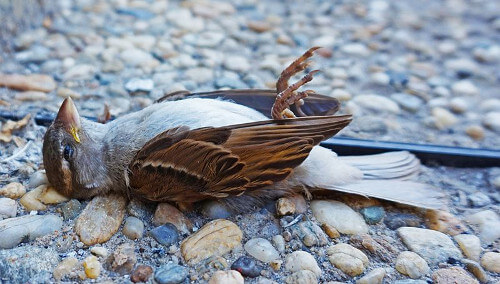
Birds have a specific behaviour towards dead animal species of the same kind. Birds even hold funeral through which they warn other birds of a nearby threat.. In addition to this, carcasses of birds are known to serve as a warning to other birds that deters them from the area where dead birds may be spotted.
This visual scarer relies on a model or an actual carcass used to signal danger to others. Pest birds often approach the dead body but usually leave when they see the unnatural position of the dead bird. This type of a scarer is often used in attempts to deter gulls from airports.
In case you have dead birds or other animals at your property, we are able to provide a dead animal removal service. Simply call us for more details how we do the service and what animals may be disposed by us.
Balloons

This is an inexpensive method which relies on the movement of balloons with which the birds get used to. People using this type of a scarer draw an additional illustration of an eye on the balloons because it has shown to increase the effectiveness of this method as it combats the birds’ ability to adapt.
There are also commercially available balloons. They all have holographic eyes from which the pest birds can’t hide because they follow them wherever they go. When the ”scare-eye” balloon placement is being moved periodically, the effectiveness of this method increases.
In the United Kingdom the use of balloons is subject to approval from the Civil Aviation Authority, especially around airfields.
Pyrotechnics
Fireworks and other kind of pyrotechnics have proved to be effective in dispersing birds at airports, landfill sites, agricultural crops and aquaculture facilities. The most common method of bird control by using pyrotechnics that is used in the United Kingdom is shellcrackers fired from a modified pistol.
It’s mostly used at airports and what makes it the best choice is the option that allows the bird controller to have some directional control over birds in flight, so they can be steered away from runways. However, there is a risk of birds becoming used to pyrotechnics or cartridge explosions.
Radio-controlled aircraft
One of the primary bird harassment methods used to keep airfields safe and clear of raptors and other large birds is the radio controlled aircraft. This type of a scarer have been used since the early 80s to haze pest birds mainly over airfields, agricultural areas and landfill sites. It has been recorded that birds habituate slowly to a treatment in which they are being actively hazed and this is why RC aircraft has been shown to be very effective against bird infestations.
Bird Control Spikes
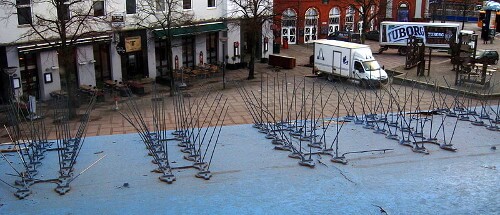
Installing bird control spikes, usually on the roof of a property, is a bird control method we offer as part of our bird control and prevention services.
The bird control spike, also known as an anti-roosting spike or roost modification, is an effective and humane solution against larger bird infestations. The device consists of long, needle-like rods and there are two types of spikes available – in plastic and stainless steel.
Bird control spikes can prevent wild and feral birds from perching or roosting at public spaces this is why they can be easily attached to building ledges, street lighting, and commercial signage. Some pest birds produce lots of unsightly and unhygienic feces, other can be inconvenient for neighbours by making strange and loud noises, especially at night.
This is why bird control spike are coming to the rescue without causing harm or killing the birds. The birds get a slightly stabb and stay unharmed. The RSPB (Royal Society for the Protection of Birds) recommends bird control spikes for deterring pigeons from gardens.
If left unchecked, the spikes are getting clogged by leaves, debris and feathers which allows the pest birds to perch easily on top. In addition, this bird control method can make some landmark buildings look less attractive or untidy. In these cases, it would be better to implement other methods of bird control such as barriers that do not allow the birds to be in an area or on a surface.
Barriers will totally exclude netting and mesh from unwanted areas. The low current electric won’t allow nesting, roosting, or loafing birds at any surface. Spikes attract small birds or pigeons which nest right into the spikes by providing large amounts of nesting debris, twigs, and grass as well. This is why it’s much more preferable to start with netting and low current barriers because these methods have proven to be effective each time they were used.
Bird netting
Birds damaging vegetable and fruit crops as well as seedlings are considered as pests. Farmers don’t like it because when birds start pecking one fruit, they continue to another one. Therefore to prevent great damages bird nets are used. If even a small portion of the fruit is bitten off, it cannot be harvested and sold respectively, because it will go into rot or fermentation damaging the rest of the harvested case.
Places where you can apply bird netting protection:
- Directly on stand-alone trees;
- Espaliers – peaches, pears, apples, grapes;
- Berries – strawberries, raspberries, blueberries, cranberries;
- On the side ventilation windows of growing tunnels;
Fish protection
Fish farmers are forced to rely on bird netting in order to protect fisheries, stocked ponds or their shrimp and tilapia breeding-pools from predatory birds. These nets are usually white, so they can be easily noticed by the large birds, which will prevent them from diving into the water for their next meal. The nets have larger mesh size and in order to make them more resistant individual strands are used for their construction, because fish farmers tend to install them on cable systems crossing the whole expanse of the water surface.
Mining Ponds
Mining ponds are extremely dangerous and potentially life threatening for the wildlife, therefore the US EPA has demanded that these cyanide rich ponds must be covered at all times. The hazardous chemical elements, used in the process of extracting minerals and metals from crushed rocks, must be confined from easily spreading in the environment.
Bird trapping
There are various techniques for capturing wild birds. The primary purpose of these trapping techniques was hunting birds for food but nowadays that is no longer the case. At the present time, birds can be captured for use in ornithology research or to be kept as pets. They can also be trapped for display in zoo gardens and all that contemporary use of birds requires that they are not harmed when being trapped. In order to preserve the bird’s population and diversity, many countries have strict laws and regulations towards capturing wild birds.
Clap traps
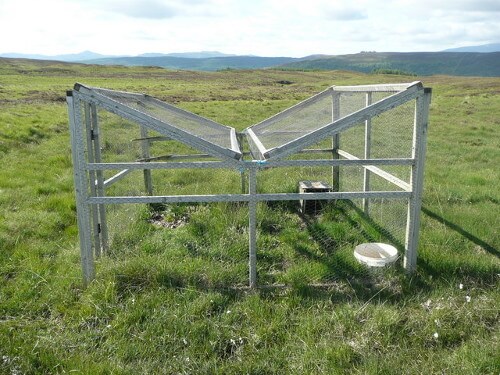
A claptrap is a device made to catch and trap birds. It consists of two parts that are made of the net with wooden or metallic frames and are kept in a furled position. When a bird gets into the trap, the movement triggers the springs attached to the frames and the two halves close in on each other, trapping the bird between them.
This device is usually used for birds that tend to perch on easily accessible places or on a still water, where would be easy for people to check on the trap regularly. Clap traps can be placed on a location with high concentration of birds or it’s possible to use luring devices to draw in the birds to it.
Funnel traps / Corral traps
Some bird traps are built to have an entrance in the form of a funnel (hence the name “funnel traps”). This narrow entrance is used to drive the birds into a wide, large corral that gives the other name for these traps. A much larger version of this trap is named “Heligoland trap” after the German bird observatory at Heligoland where it was first designed.
Mist nets
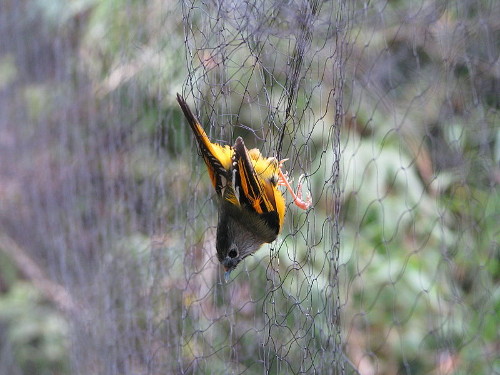
Mist nets are thin nets convenient for catching wild birds. The invisible net is tightening across the trees in a way that it hinders the flight path of a bird. It flies into the mist net and gets entrapped in it. The nets are often used in bird ringing and are generally never left without supervision. A single bird that captures in the mist net is immediately removed. This is required in order not to injure the bird and to prevent it from being killed.
